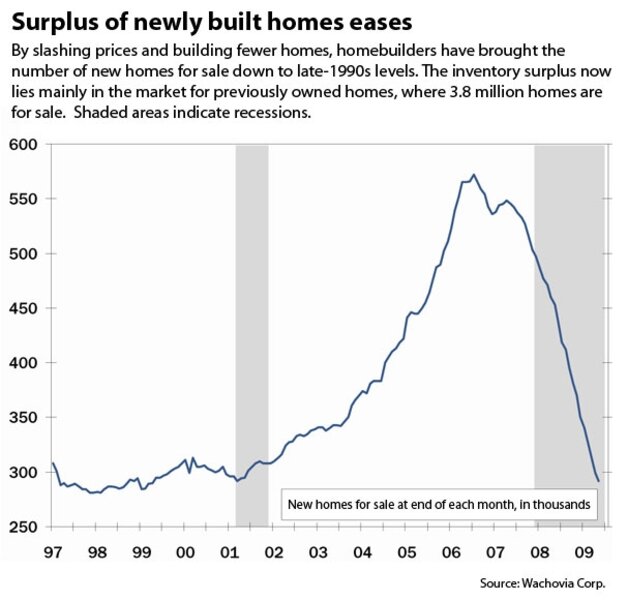Housing market inches toward stability
Loading...
The housing industry, the first part of the economy to fall into recession, still faces a big challenge: an excess supply of unsold homes.
That's the picture that emerges from reports this week from builders and realtors. The numbers show some signs of progress, but they also suggest that surplus inventory will weigh on the housing market for months ahead.
Sales volume for new homes fell 0.6 percent in May, the Commerce Department said Wednesday. A day earlier, the National Association of Realtors said sales of previously owned homes rose 2.4 percent in May. In both reports, median home prices edged upward, and in both the sales volume is running higher than it was in January.
The challenge is the supply of unsold homes.
Back in 2004 and 2005, previously owned homes were selling at an annual pace of 7 million units, and fewer than 3 million were up for sale in any given month. Today, the existing-home sales pace has cooled to fewer than 5 million, and nearly 4 million of them are on the market.
"You still have very elevated inventories" despite recent progress, says Adam York, an economist at Wachovia Corp. in Charlotte, N.C. "We won't be back to what feels to most market participants like a good housing market until ... probably 2012."
Even if it won't feel like a real estate boom, the good news is that economists see the housing market is moving toward greater stability. That alone would be a big help for an economy struggling to recover.
The economy will see "stabilization in housing activity and residential investment, but no substantial rebound," economists at Goldman Sachs in New York predicted in a written analysis Wednesday. "The overall excess supply of housing remains enormous."
Mr. York says residential construction could start rising again later this year, just as the rest of the economy may also be returning to growth. But he says home prices will probably keep declining for the rest of this year, so that the market can work through that excess supply of homes.
The decline in home values has weighed on consumer spending, because it reduces the net worth of families that own homes. On the positive side, falling prices reduce housing costs for people buying new homes and puts downward pressure on the costs that many renters face.
And eventually, falling prices help bring supply and demand into balance. The western US has seen the sharpest plunge in existing-home prices (down 31 percent in a year) of four US regions. And the West is the only region to see sales volume rise – up 12 percent.
The inventory challenge lies with existing homes more than with newly built ones. Developers are eager to unload homes once they’re built, whereas individuals may choose not to sell a home if the pricing environment is weak. The high foreclosure rate is also putting lots of existing homes back on the market.
Rising sales volume is the key to working through the surplus. For both new and existing homes, sales are running at a stronger pace now than in January. New homes reached an annualized pace of 342,000 sales in May, versus 329,000 in January. May's median sale price was $221,600 for new homes, and $173,000 for existing homes.



